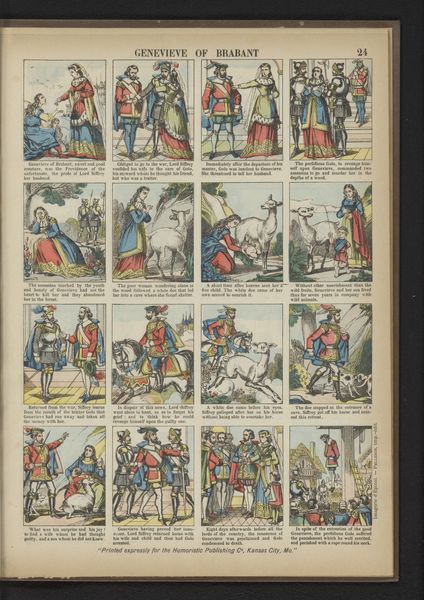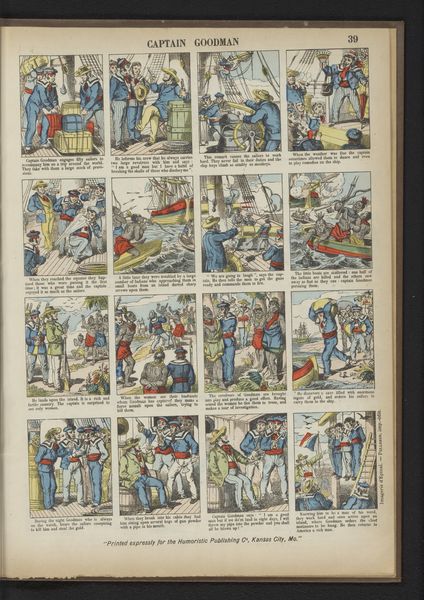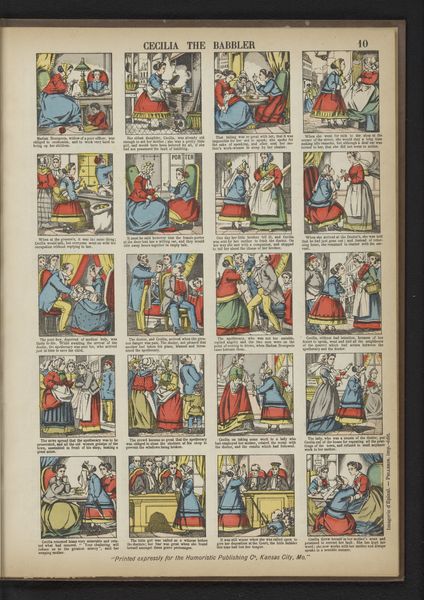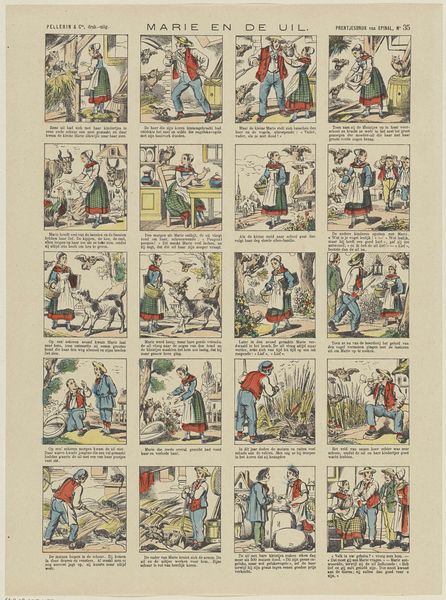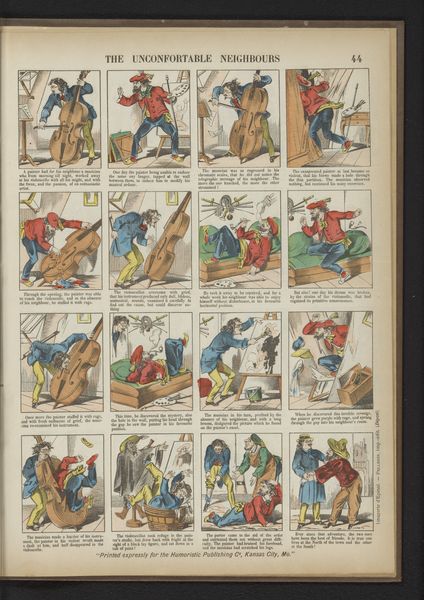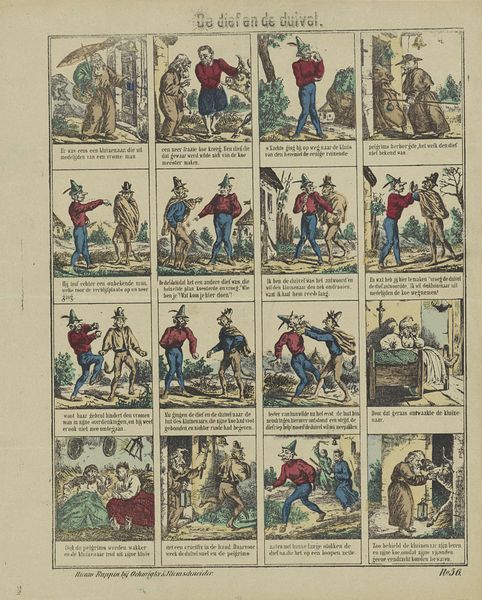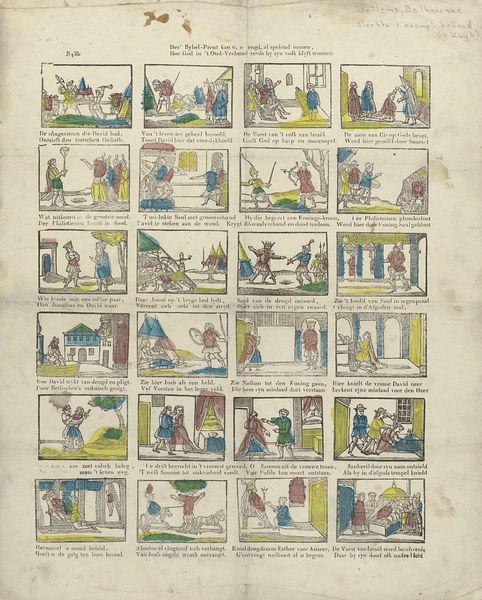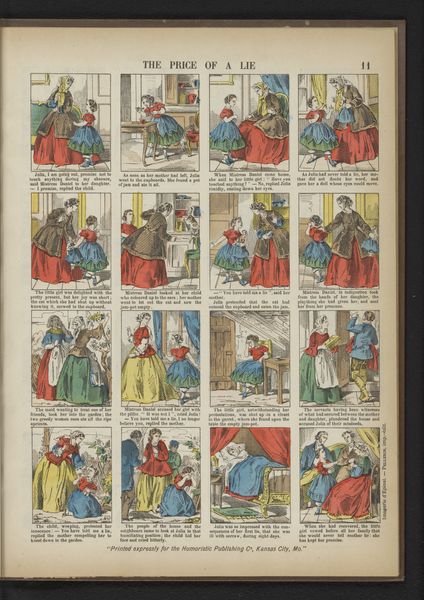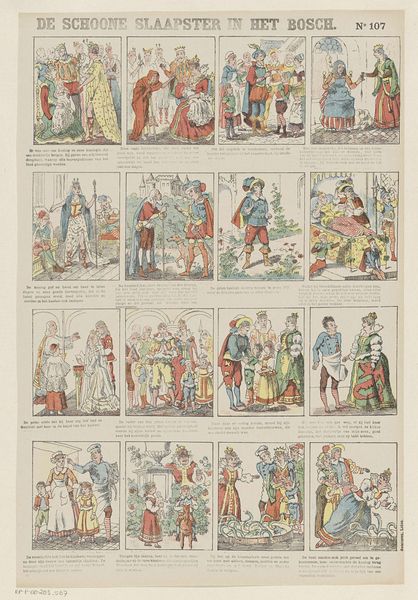
print, woodcut
#
narrative-art
# print
#
folk-art
#
woodcut
#
watercolour illustration
#
genre-painting
#
watercolor
Dimensions: height 399 mm, width 295 mm
Copyright: Rijks Museum: Open Domain
Curator: Looking at "Jack is niet zo zakelijk," also known as "Un-Business-Like Jack," a woodcut print from the late 19th century by Imagerie d'Epinal - Pellerin, don't you find the narrative unfolds in a really captivating, albeit a bit perplexing, way? There's almost a comic strip-like quality. Editor: It's true; it feels very different than typical art of that period. It's…whimsical? With all the little vignettes and slightly off-kilter scenes, how do you approach understanding something like this? Curator: I'm most drawn to its materiality and its connection to mass culture. We need to think about production. The medium, a woodcut print, speaks to a specific mode of making. This wasn’t an individual artistic pursuit in the same way we might view a painting. It's "printed expressly for the Humoristic Publishing Company," according to the bottom text, which suggests a different purpose for its existence: that it’s produced for commercial distribution to the masses. So, what kind of impact did that have on the artist and the work itself? Editor: I hadn't considered that, the actual printing and mass distribution changing the nature of the piece itself! Were individual choices compromised? Was the content reflective of that tension? Curator: Exactly! How does the need to be easily and widely consumed influence the narrative? How does a turn of the century production process dictate meaning? What's the relationship between 'folk-art', its production, and distribution? What values are being presented for a buying public to embrace? Editor: Thinking about the commercial aspect makes me see the humor in a new light too – almost satirical, with the "un-business-like" Jack going around being anything BUT efficient. Curator: Yes! It's a fascinating object lesson in understanding art not just as a singular creation, but as a product of labor and consumption within a specific historical and economic landscape. Editor: I’m seeing a totally new layer to this seemingly simple artwork. Thanks to your perspective, I'm rethinking the relationship between art, production, and society!
Comments
No comments
Be the first to comment and join the conversation on the ultimate creative platform.

